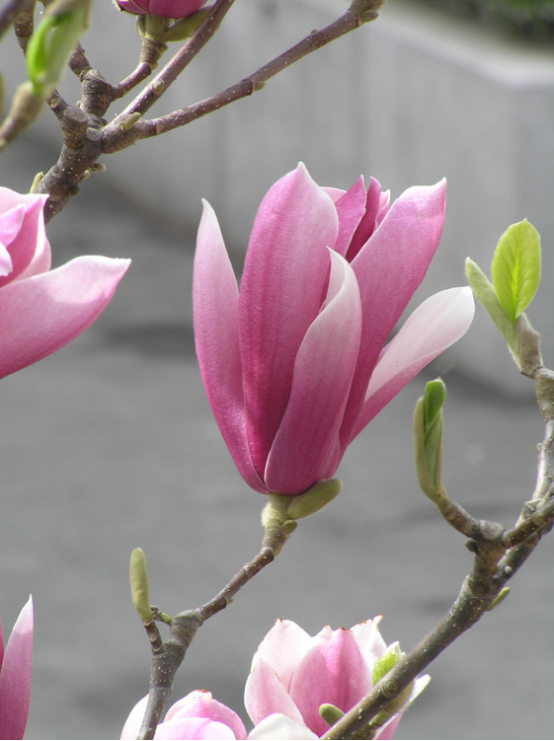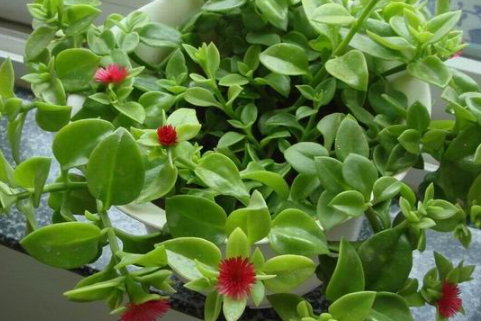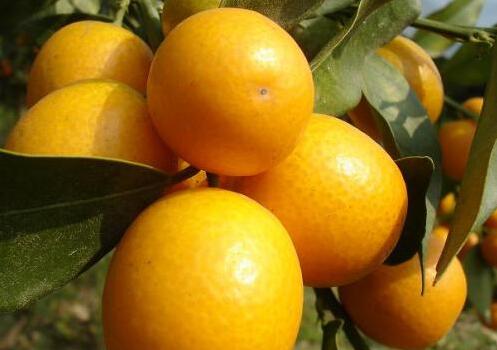four。 To ensure that the florescence is not affected by insect pests.
Prevention and control methods:
1. Remove pest plants in the field and prune insect branches, take them out of the field in time and burn them.
two。 Drug control: spray Popper 1-3 degree stone sulfur mixture during dormancy; use 1000 times of omethoate EC and 1500 times of 10% pyrazine wettable powder during nymph incubation period; when adults occur, use 800-1000 times of killing scale or 1500 times of 40% speed EC to spray evenly, adding an appropriate amount of diesel oil during spraying can increase its permeability, and the liquid must be sprayed evenly. Killing scale crazily has a special effect on scale insects.

Control of Diseases and insect pests of Cymbidium during flowering period
Crane orchid, also known as Paradise Bird Flower, is native to South Africa. After flowering, it looks like a crane, so it is named crane orchid. Next, let's take a look at the flowering period and the knowledge of disease and pest control of the orchid.
The florescence of Magnolia:
Generally speaking, the breeding period of Magnolia is very long. It is usually sown in March and can only be planted two years later. After planting, it can be planted separately. Once it is ripe, it will blossom every winter, and the florescence is very long, which can last until June of the following year. If artificial pollination is carried out during flowering, we can also collect and dry for a new round of sowing when the seeds are withered.
Pest control of Clematis paniculata:
1. Grey spot of Clematis orchid
The gray spot of Clematis paniculata mainly occurs on the leaves, the disease spot is black-brown spot in the initial stage, multiple disease spots are connected into one piece, or a single disease spot expands into an irregular shape, with grayish brown inside, and the edge is dark brown; in the later stage, the disease spot is dry and black grains appear on the disease spot in the wet environment.
Solution: clean up the diseased and disabled tissue in time, avoid causing plant wounds in maintenance, strengthen ventilation and light transmission, increase foliar spray, and keep the foliar surface clean and moist. At the initial stage of the disease, 800 times solution was sprayed with ultra-broad-spectrum fungicides.
2. Anthracnose of Hewang orchid
Colletotrichum gloeosporioides is caused by Alternaria przewalskii, which belongs to half-known fungi. The pathogen overwintered with mycelium on diseased leaves and remnants, and invaded from the wound by wind, rain and insects in the next spring. Old leaves usually develop in early April, while new leaves begin to occur in August. The disease is easy to occur when the humidity is high, and the incidence of stagnant water in the basin and poor ventilation is aggravated. The disease is mainly damaged leaves, the disease spot is round or nearly round, the edge is reddish brown thin line, the center is gray brown spreading, about 6 × 4 cm in size, and the conidium disc shows small black grains when it matures. Generally speaking, the old leaves fall ill in the first half of the year and the new leaves in the second half of the year.
Solution: it is found that the diseased leaves are cut off from the edge, and the diseased leaves can also be removed, burned or buried deeply. Spray 25% carbendazim wettable powder or 40% polysulfide gel suspension, 70% copper oxychloride suspension 1000 times, 50% carbendan 500 times, or 75% thiophanate methyl 1000 times.
3. Botrytis cinerea
Solution: spray water to the plant as little as possible, increase the application of potash fertilizer to ensure a good ventilated environment; in the initial stage of the disease, use 75% chlorothalonil wettable powder 500 times liquid spray every 10 days, a total of 2 times 3 times.
4. Crane orchid blight
Attention should be paid to soil disinfection in the prevention and control of orchid blight, plant spacing should not be too small, planting should not be too deep, old leaves should be cut off in time, ventilation and nutrition management should be strengthened, and plant growth should be increased.
Solution: immediately after the diseased plant was found, the soil was disinfected locally, and Jinggangmycin was sprayed regularly during the growing period to achieve the purpose of early prevention and control.
5. Scale insects
Scale insect damage is easy to occur when indoor cultivation is not well ventilated, and it is generally parasitic on the stem, leaf and inflorescence of Cymbidium. The adults and nymphs suck the plant juice with stinging mouthparts, making the leaves curl, yellowing and aging, affecting the plant growth, and in serious cases, withered and fallen leaves, until the death of the whole plant; at the same time, when the shell insect is infected, a large amount of honeydew is discharged in the wound, which pollutes the leaves and causes coal fouling, and a layer of black mold is produced on the leaves, which affects the normal growth and flowering of the orchid.
Solution: shortly after the nymphs hatch, before the waxy shell is formed, the pesticides used can be 40% dimethoate 1000 times, or 50% trichlorfon 250 times, or 80% dichlorvos EC 1000 times 1500 times, or 2.5% deltamethrin EC 2000 times 2500 times. Generally, it is better to spray 1-3 times continuously, each time at an interval of 7-10 days. In addition, special attention should be paid to the fact that shell insects are easy to develop resistance to drugs, and it is necessary to master the concentration of pesticides and use them alternately.
6. Beetles
The beetle larvae are called grubs, which engulf the young part of the roots of the orchid in the ground, resulting in residual roots and root breakage. When the harm is light, the growth of the seedlings is blocked, the leaves turn yellow or the plants are thin, and when the damage is serious, the seedlings wither and die.
Solution: in the adult occurrence period. Mix sugar, vinegar, liquor and water into a liquid according to the proportion of 1, 3, 2, 20, and add a little pesticide liquid. Put it in a can, hang it on the planting ground, and trap it. When insect pests occur, directly spray 50% marathon 1000-1500 times liquid to control.
7. Drillworms
The orchid borer, also known as the orchid borer, is specially harmful to tender shoots and buds, and there are dung shavings in the wormhole, which is extremely harmful. The main way of damage is that the larvae eat into the stem of Cymbidium paniculata, destroy the growing point and cause withered seedlings.
Solution: use 4.5% cypermethrin EC 50 ml, or 20% fenvalerate EC 50 ml, spray with water 60 kg, once a week, spray 2 times 3 times.
8. Snails
Snails often hide in dark and wet places during the day and come out at night, especially in the early morning or evening after heavy rain, which affects the ornamental value of Crane orchid.
Solution: use 1000-1500 times solution such as 50% phoxim and 80% dichlorvos, spray once every 5-7 days, 3 times continuously.
The orchid is a kind of ornamental flower that we like very much, the flower shape is peculiar, the leaf is broad and green, give a person a kind of fresh and comfortable feeling, use to decorate the home will bring very good effect, but the maintenance of the orchid needs to pay attention to the problem of diseases and insect pests, so as not to affect the ornamental effect of the orchid.
How to control diseases and insect pests in flowering stage of grape
It is now in the flowering stage of the grape. The purpose of controlling diseases and insect pests in the flowering stage of the grape is to ensure the integrity of inflorescence and good pollination.
The use of pesticides during the flowering period of grapes may affect pollination. In order to ensure safety, pesticides are not used during flowering. If the prevention and control measures before flowering are good, diseases will not occur at flowering stage. If inflorescences are attacked by diseases or encounter sudden insect pests (such as beetles), remedial measures should be taken and safe chemicals should be sprayed on flowers, young fruits, tender shoots and young leaves of grapes.
Measures to control diseases and insect pests at flowering stage of grape:
1. When Botrytis cinerea occurs at the flowering stage, causing rotten inflorescences and pedicels, the ear can be treated with 16% Huipu 1500 times + 22% clotrimazole 1500 times.
two。 Downy mildew occurs at flowering stage, causing pedicels and rachis to turn yellow and dry. The ear can be treated with 1500 times of 25% protection and 2500 times of 50% Jincock.
3. Although the problem of grain size is manifested in the middle and later stage of grape growth, it is directly related to the management before and after flowering. If the situation of grain size has been found, there are no remedial measures, so we should pay attention to the early management. In this period, boron and zinc fertilizers should be applied according to the growth situation and soil fertility determination. in addition, the growth of branches should be controlled by regulating the supply of nitrogen fertilizer and binding shoots (reply to "size grains" for more preventive measures).
4. If you find that the beetle is harmful, you should immediately apply pesticides, such as 3000 times the liquid.
Note: the application time is chosen in the afternoon on a sunny day to ensure that the liquid can be used after the medicine has been used and before dark, so as to avoid drug damage.
- Prev

The reason for the non-flowering of Peony Cymbidium
1. The main reason why peony hanging orchids do not blossom too often is that we water it too frequently at ordinary times, although we have to water more water during its peak growth period to supplement the nutrients consumed during the growing period, so that the plant can grow faster and better, but if it is overwatered, it will make the plant grow in vain.
- Next

Culture methods of kumquat trees
1. Kumquat likes sunshine and warm and humid environment, so it is best to put the golden orange tree in a sunny place, but pay attention to moderate light in summer, so that the golden orange tree will grow well. 2. Watering kumquat is not resistant to water and moisture, so there can be no stagnant water in watering, otherwise the golden orange tree will rot its roots.
Related
- Fuxing push coffee new agricultural production and marketing class: lack of small-scale processing plants
- Jujube rice field leisure farm deep ploughing Yilan for five years to create a space for organic food and play
- Nongyu Farm-A trial of organic papaya for brave women with advanced technology
- Four points for attention in the prevention and control of diseases and insect pests of edible fungi
- How to add nutrient solution to Edible Fungi
- Is there any good way to control edible fungus mites?
- Open Inoculation Technology of Edible Fungi
- Is there any clever way to use fertilizer for edible fungus in winter?
- What agents are used to kill the pathogens of edible fungi in the mushroom shed?
- Rapid drying of Edible Fungi

